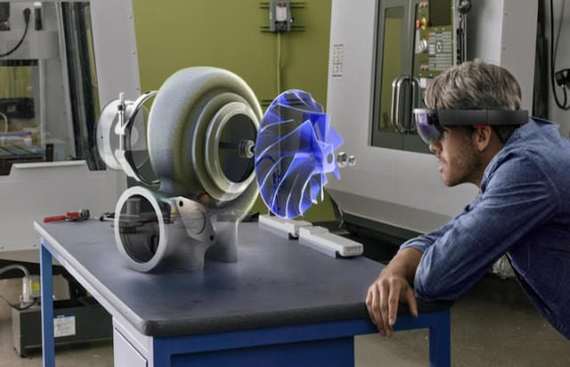Embracing AR & VR Aviation Industry Upgrades its Processes

The Augmented Reality and Virtual Reality are the latest tech trends that are doing rounds across various sectors such as tourism, shopping, education, and most importantly gaming. These technologies eliminate physical existence and provide a virtual world to the users and escalate their experience. Among the other sectors, the aviation industry has also embraced these technologies which are aiding the industry in countering certain potential dangers that are faced by the aviation sector.
With the rising use of AR and VR in aviation, the marketsandmarkets has estimated these technologies usage in aviation to grow from $78 million in 2019 to $1,372 million by 2025, at a CAGR of 61.2 percent during the predicted period. The AR and VR’s cost-saving and efficiency are the vital features that accelerate the growth of these technologies in the aviation industry. Alongside, these technologies augment the passenger's experience and cut down the faultiness caused due to human error which adds to the AR and VR market in the aviation sector.
AR and VR Application in Aerospace
Presently the AR and VR have evolved a long way past the gaming tactics. The aviation sector is used in crucial ways to eliminate the major errors that are caused by human negligence.
VR-Based Pilot Training
The pilot plays a most responsible role thus, they undergo an interview before taking off every single time. Hence, these technologies are used to train the most crucial job – Pilots. During their training period, pilots spend several hours getting trained using flight simulators and computer screens. However, the training sessions use real airplane cockpits removed from the original planes and geared with movie screens to simulate actual airplane. These simulators have proved to be effective all these years, but they aren’t budget-friendly and not handy for professional training as well, which makes the training less effective. Alongside this, the busier airport did not find it feasible to accommodate the trainee pilot to carry out practice sessions, which hinders their regular schedule. Thus, the AR/VR technologies’ real-environment that comes with virtual reality eyewear and other devices to create a replica of the airport has found it more effective to train the pilots. Also, this enables the trainees to get a complete idea of airport and aircraft without the use of real aircraft this reduces the cost as well as increases the quality of the training.
Ground Operation Training
Before entering the plane, the pilot as well as the ground crew has the various task to scrutinize the aircraft to minimize the risk of failure post-take-off. Although, training the employees on-the-job is the ideal procedure, but this is certainly not feasible due to lack of access to functional aircraft also, the staffs have to work on numerous models throughout their careers. The airport is loaded with passengers and the public almost every time makes it hard to give guidance to new trainees as it could the stressful training them as well as checking the faults. Therefore, AR-VR technologies-based courses are arranged for the ground staff to give them a zest of marshaling, turnaround inspection, and other common gesture. This keeps the financial expenditures and safety under check.
Cabin Entertainment & Aviophobia
AR-VR is not new for entertainment, their headsets provide great entertainment programs to the passengers throughout their journey. Also, these technologies give the passengers complete access to a 360-degree live feed camera that would be attached outside the plane. It would in fact transport them to the virtual world completely. Certain passengers tend to have flying phobias or aviophobia, in that situation AR-VR headphones aid solely in treating this phobia by implementing exposure therapy that naturally brings down the fear of flying.
